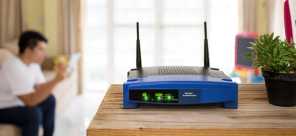Wifi Harm: Experiment finds shrubs die when placed next to wireless routers
From December 2013:
For their school science project, a group of 15 year-old girls in Denamrk wanted to test whether cell phones could be harmful.
Pupil Lea Nielsen said: ‘We all thought we experienced concentration problems in school if we slept with our mobile phones at the bedside, and sometimes we also found it difficult sleeping.’
They put plants near wireless routers, to test whether they showed any bad effects from being next to the radio waves. They found that when they grew trays of garden cress next to wifi routers, most of the seedlings died.
Six trays were put in a room without any equipment and another six trays were put in a room next to two routers. Over 12 days, many of the seedlings in the wifi room turned brown and died, while the seedlings in the other room thrived.
Critics claim that the wifi room seedlings could have suffered from the heat emitted from the devices, not the radiation. This seems unlikely though, as they were not touching...
Researchers in Holland found that ash trees exposed to wireless radio signals suffered from damaged bark,bark bleeding, and dying leaves. The city of Alphen aan den Rijn ordered the study in 2008 after officials found unexplained abnormalities on trees, which they didn't believe to be caused by a viral infection.
In the Holland study, the trees were exposed to six sources of radiation, with frequencies ranging from 24212 to 2472 MHz and a power of 100 mW at a distance of just 20 inches. The trees closes to the wifi radio developed a 'lead-like shine' on their leaves due to the dying of the upper and lower epidermis, eventually leading to the death of parts of the leaves.
About 70 percent of all trees in urban areas in the Netherlands show the same symptoms in 2013, while only 10 percent did in 2008. Trees in densely forested areas are not affected.



 Report a concern
Report a concern

 Add Comment
Add Comment



